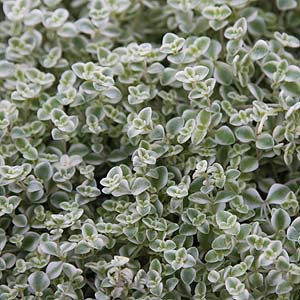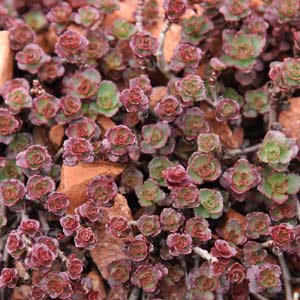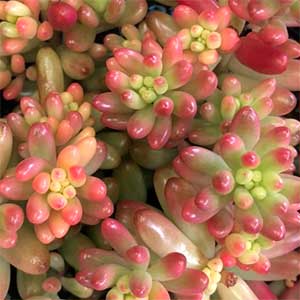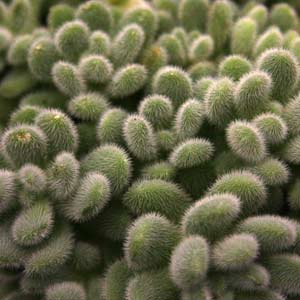
With ground-cover plants being so much in demand, the creeping sedums are beginning to gain popularity. The ‘Green Roof’ industry has been a big promoter of these plants, however we want to bring them back to earth as low care ground cover plants.
Sedum pellucida ‘Little Missy’, is more of a mound forming type, it also trails well, an excellent cover the top of low garden wall in a sunny position (pictured right)
We would probably not suggest them as a lawn replacement if you intend to walk on them regularly, however for many other areas these low growing sedums are a great solution.
Varieties such as Sedum spathulifolium ‘Cape Blanco’ can look great in rock and crevice gardens.
Sedums grow well in poor soils, and thats a big advantage. Most of the creeping varieties require little to no maintenance, thats another big plus. And many are dense growing, crowding out weeds and reducing the need to ‘weed the garden’ another big tick for sedums.
And finally, they require little water and virtually no fertilizer, so lets hear it for the low growing sedums, the versatile ground-cover.

Care
Sedum spurium ‘Schorbuser Blut’ or ‘Dragons Blood’ is one of the best low growing mat-forming sedums. It spreads easily from where the nodes on the stem come in contact with the ground. One of the easiest forms to establish (pictured right).
The key to successfully establishing any ground cover plant is removing as many weeds as possible before planting. For sedums, you also need to establish good drainage, non of this humus rich moisture retentive soil for these hardy little plants.
Removing the weeds is either by hand weeding, solarising or using a weed killer. The choice is yours, however we do prefer the first two.
Preparing the soil is a little more complicated. sedums like good drainage, and the gound-cover types seem to be a little more particular than others.
First make sure that water does not pool in the areas you want to plant out. You can hill up the soil a little to create a gentle slope. You should lightly turn the soil over.
You could then add a layer a layer of pea gravel which are simply small rounded stones. This will help with the drainage and act as a mulch, you can buy it by the bag.
Planting Sedums as Ground Covers
You are then ready to plant. You can plant into the soil, or through the pea gravel, whichever works for you. Work out a planting distance taking into account the eventual spread of the plant.
You will need to water in well, and you may need to water throught the first summer as root system established, after this those sedums should be on their own in terms of care.

You will need to keep an eye on weeds until the plants grow and spread. And even after the form a good cover the occasional weed may appear. So that its about it for caring for your new ground-cover from the wonderful creeping sedums.
Creeping Sedum Varieties
We do like Sedum rurotinctum with its red ‘Jelly Bean’ foliage. These turn a more vibrant red the more sun they get.
Others Include :

- Sedum spurium ‘Schorbuser Blut’
- Sedum rubrotinctum
- Sedum brevifolium.
- Sedum hintonii.
- Sedum pellucida ‘Little-Missy’
- Sedum album chorticum,
- Sedum album subsp. teretifolium ‘Murale’,
- Sedum spurium ‘Voodoo’,
- Sedum spurium ‘Red Carpet’
- Sedum fosterianum ‘Oracle’
All are low growing and make excellent ground covers.
Sedum hintonii is one we like, however although it is low growing it is really a tropical sedum, native to Mexico and rare.
Better suited to growing in containers, unless you live in Southern California.

